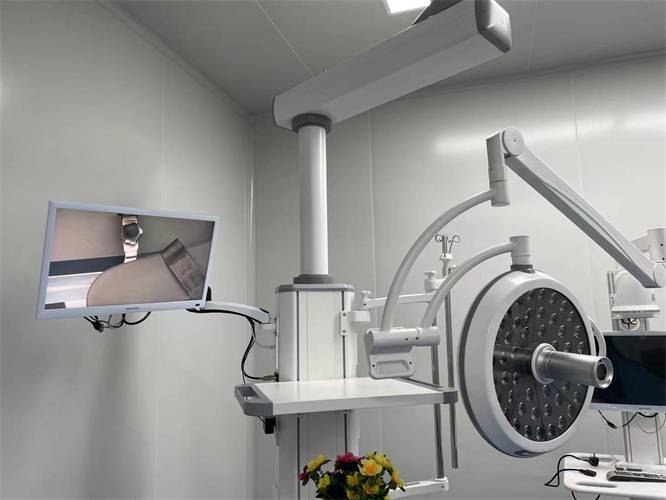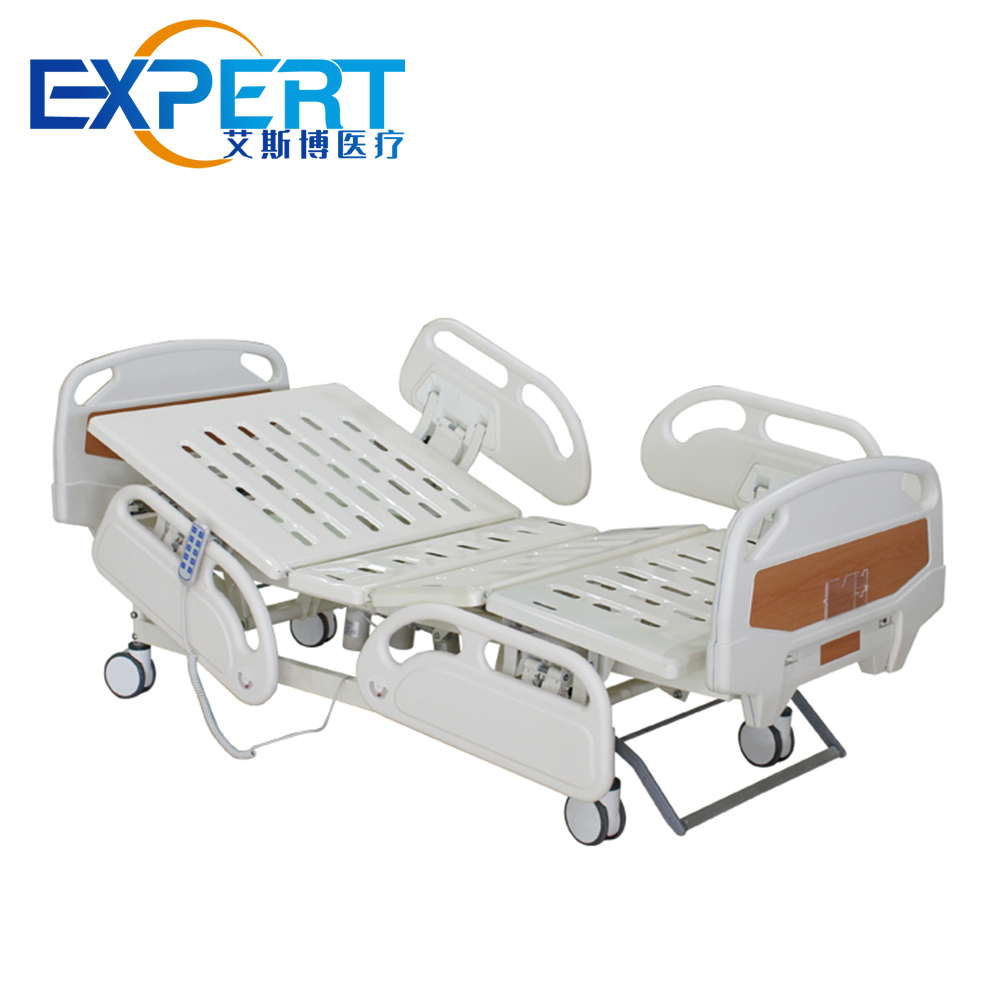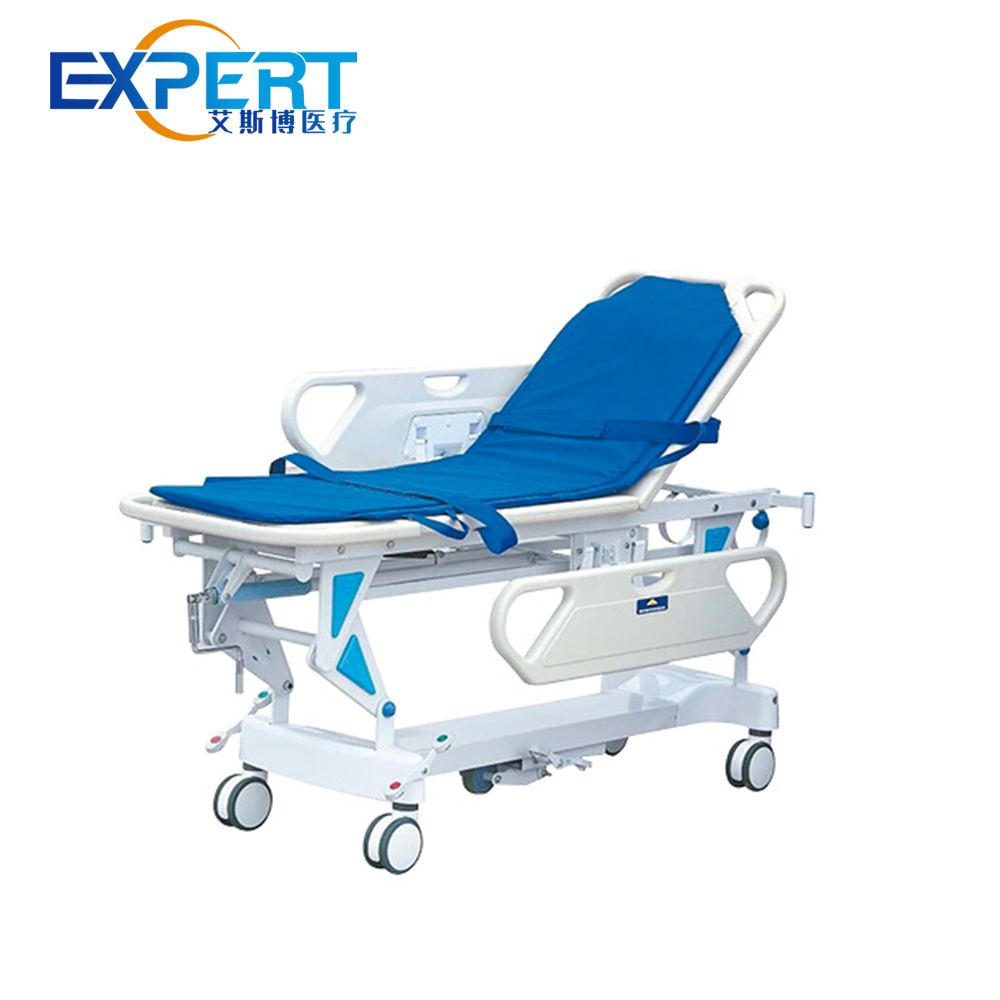Dirección
304 North Cardinal St.
Dorchester Center, MA 02124
Horas laborales
Lunes a viernes: 7:00 a. M. - 7:00 p. M.
Fin de semana: 10 a. M. - 5 p. M.
Grupo de equipos médicos expertos de Shandong
Expert Medical Equipment Group, como uno de los fabricantes y exportadores de equipos médicos más profesionales de China, insiste en proporcionar productos confiables, de seguridad y de calidad superior, así como los mejores servicios posventa para el mercado mundial.
Hidráulico eléctrico, capacidad de carga de 350 kg, se puede equipar con tablero de cama de fibra de carbono según los requisitos del cliente.
Temperatura de color, sin sombras, alto índice de reproducción cromática, adecuado para cirugía general, cirugía cardiotorácica y neurocirugía.
UCI de cinco funciones, pesaje de cama completa opcional, RCP de un toque, revestimiento antibacteriano.
Gestión centralizada de gas y electricidad, rotación de 360°, capacidad de carga de 120 kg+, núcleo de la estación de trabajo del quirófano.
28 ingenieros senior | Diseño integral de estructura, óptica y control eléctrico. 22 inspecciones antes de que cada dispositivo salga de fábrica | Tasa de reparación < 1%.
Centro de corte láser | Línea de pulverización automática | Sala de ensamblaje libre de polvo de 10.000 niveles. Capacidad de producción anual de 50.000 lámparas quirúrgicas y 30.000 mesas de operaciones.
Respuesta en 24 horas | Repuestos disponibles en 72 horas | Soporte técnico de por vida. Múltiples almacenes internacionales para envíos cercanos.
Con sede en Jining, el centro de equipos quirúrgicos más grande del mundo, enviamos anualmente más de 100 000 juegos de mesas de operaciones, luces quirúrgicas y camas de UCI a más de 70 países.

NOS ENCANTA LO QUE HACEMOS
Es mejor ser un buen especialista en un negocio que un promedio en varias industrias.
Nuestro equipo de diseño y fabricación de equipos médicos conoce bien las necesidades de los pacientes y los médicos. Por lo tanto, estamos seguros de que somos expertos en la industria de equipos médicos.
Somos uno de los principales fabricantes de equipos médicos de alta tecnología, y los productos se distribuyen ampliamente en hospitales y clínicas de todo el mundo y cuentan con el respaldo de una extensa red de distribuidores.
Todas las etapas de producción de nuestros productos están bajo estricto control, y cada paso está sujeto a pruebas y controles de calidad precisos y profesionales. Todos los productos tienen un rendimiento casi perfecto en la práctica médica.
Además de los equipos operativos quirúrgicos básicos y los instrumentos hospitalarios, también producimos y proporcionamos equipos de diagnóstico médico, dispositivos de tratamiento y recuperación digitales y otras series de productos, cientos de variedades y especificaciones para cumplir con varios requisitos. deje de proveedor de soluciones de equipos médicos.
Como fabricante profesional de equipos médicos de ventanilla única, EXPERT MEDICAL posee una cadena de suministro integrada para proporcionar una gama completa de servicios de equipos médicos para quirófanos, áreas de cuidados críticos e instituciones de atención primaria, etc., con tecnología de producción moderna y estrictos controles de costos, suministramos los productos más rentables para todos nuestros clientes.

Desde luces quirúrgicas, mesas de operaciones, torres médicas montadas en el techo, camas de UCI, hasta carros, camillas y equipos de rehabilitación, más de 200 especificaciones disponibles de una sola vez, lo que elimina la necesidad de que los hospitales busquen a múltiples proveedores.
Más de 30 patentes técnicas, con entre 3 y 5 productos nuevos lanzados anualmente, colaborando con hospitales de primer nivel para realizar pruebas clínicas para garantizar que cada actualización aborde problemas reales.
Soporte técnico remoto 24 horas al día, 7 días a la semana; varios almacenes de repuestos en el extranjero, con piezas entregadas en el sitio dentro de las 96 horas; utilizado por hospitales de más de 70 países, con una tasa de recompra de 78%.
Entendemos la intención original y las razones por las que los clientes personalizan los equipos médicos, por lo que podemos proporcionar el equipo más adecuado. Contamos con un equipo profesional de I + D para diseñar y satisfacer las solicitudes de diferentes clientes sobre el equipo médico personalizado y proporcionar productos con diferentes especificaciones de acuerdo con diferentes solicitudes para garantizar una mayor eficiencia en el trabajo. Ahora háganos saber sus solicitudes de personalización para brindarle lo mejor. equipos y productos profesionales.


EXPERT MEDICAL se dedica a establecer un sistema de calidad tranquilizador durante todo el proceso de fabricación de equipos médicos. Por este valor fundamental, somos responsables tanto de nuestros clientes como de toda la industria.
Discover tips to select the best dental surgical light for...
Lee masDiscover how a medical pendant system improves safety, workflow, and...
Lee masFind trusted pediatric hospital bed manufacturers. Compare quality, certifications, and...
Lee masLearn how to choose the best hospital care cart for...
Lee mas
La serie de mesas de operaciones Expert Medical cumple con los requisitos de cirugía general, corazón, cabeza, cuello, cavidad torácica y otras operaciones quirúrgicas.

La serie de lámparas quirúrgicas Expert Medical está involucrada en varios campos de iluminación quirúrgica y sistemas de iluminación auxiliar.

Los expertos médicos brindan varios tipos de UCI hospitalarias y camas de enfermería que tienen un diseño realmente hermoso y son duraderas de usar.

Ya sea que se trate de atención médica diaria o cirugía, los carros quirúrgicos Expert Medical pueden ayudarlo a trabajar de manera más eficiente.

Con una variedad de estructuras y funciones, las camillas Expert brindan soporte de fuerza en el trabajo de rescate de emergencia y transporte de pacientes.

Los otros dispositivos médicos de Expert Medical trabajan juntos para ayudar a construir un sistema médico completo.
Nos dedicamos a proporcionar un modelo de venta integral al cliente; Prestamos más atención a la satisfacción de nuestros clientes.
